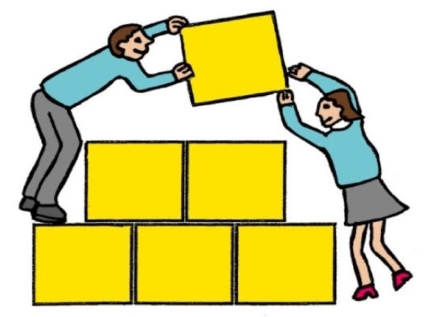Cooperative Learning
Cooperative Learning
What was wrong with teaching in the past?
First of all the efforts and “style” of teaching in the past were not wrong – we are just living in a different world. For many of us the changes in technology and how it has changed the way we live and work has been immense. How many of us when we were at school thought that our jobs would involve sending messages at the speed of light to all corners of the globe from our phones. This is the world that our children are growing up in and they need the skills to thrive in this new environment.
What is Cooperative Learning?
Cooperative Learning is an approach to teaching. Knowledge and skills are modelled by the teacher and then learners are able to practise these skills in a series of structured activities. It is an approach that we have been working on with some expert guidance from Stalham Academy. It supports our work on developing language rich classrooms and inquisitive and reflective learners. These structured activities are called CLIPS. CLIP means Cooperative Learning Interactive Pattern. Each CLIP is designed to encourage certain elements of listening, speaking, questioning and response. The teacher will use the CLIP they feel best supports the learning of the groups of learners in their class. Cooperative learning is very interactive with pupils moving around the class. Speaking to each other and answering questions.
What are the CLIPS?
CLIPS are content free – this means they can be used in any subject. They are a great way of encouraging discussion, sharing ideas and letting everyone take part. We use a variety of CLIPS in lessons - have a look at the guide below for more information about them and how they might be used.
What does a cooperative Learning Classroom look like?
As far as possible your children will work in groups of 4. Sometimes an adult may make up the fourth person if there is an odd number. These groups can be in ability groups or mixed ability depending on how the teacher wishes to differentiate. These groups are not set in stone and children will find themselves working alongside a variety of people in their class. This encourages respect and positive behaviours for learning.
Will my child still work independently?
Yes, they will. A “typical” lesson may look like this: Teacher Models then uses a CLIP to practise. Then the teacher will Model the next step or focus of the lesson followed by another CLIP. After that the children will show what they know independently. This work is then marked in the book and tracked as evidence to show your child’s progress. Cooperative Learning gives confidence, practise and support to a child before they start.
So how does Cooperative Learning help?
Cooperative Learning is a way of ensuring that children develop communication skills and an acknowledgement that working together is an effective way of building skills vital for work and thought in the future. Also it helps to build confidence before independent work is undertaken. Cooperative Learning also encourages deeper thinking and critical thinking skills as the follow-up questions we usually ask are how? and why? Is Cooperative Learning being used in any other schools? Many schools have parts of cooperative learning as part of their teaching. A recent report from the Sutton Trust noted that Cooperative Learning was very effective at improving pupils’ progress. However, schools in England do not use it as much, yet as in Scandinavian countries Cooperative Learning is much more widely used.
How can I help?
You can help in the same way as you usually; reading regularly with your child, listening and talking and encouraging your child to explain their answers. You may even wish to ask which CLIPS your child has been using that day in class. Is this a “magic wand” to solve all the problems? No it is not a magic wand. Learning still requires children to work hard, listen and concentrate on tasks. However, cooperative learning can help to boost engagement, understanding, teamwork and attainment.
What do I do if I have further questions about this?
Have a look at the guide below, come in and speak to your child’s class teacher who will be happy to talk to you about it or ask your children which CLIPS they have been using in class.
